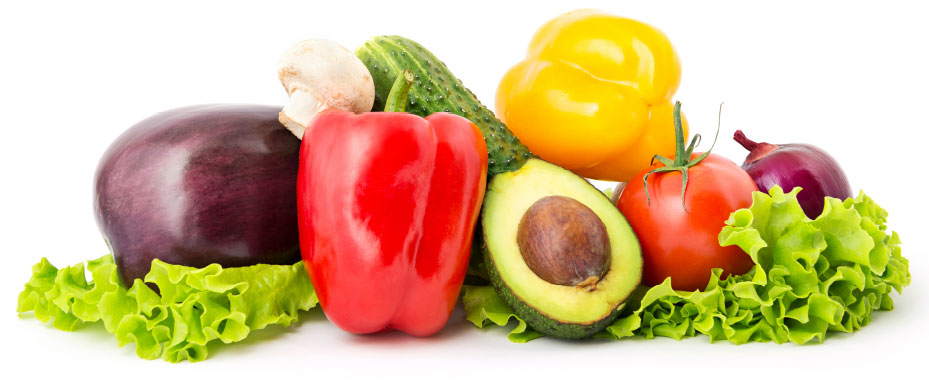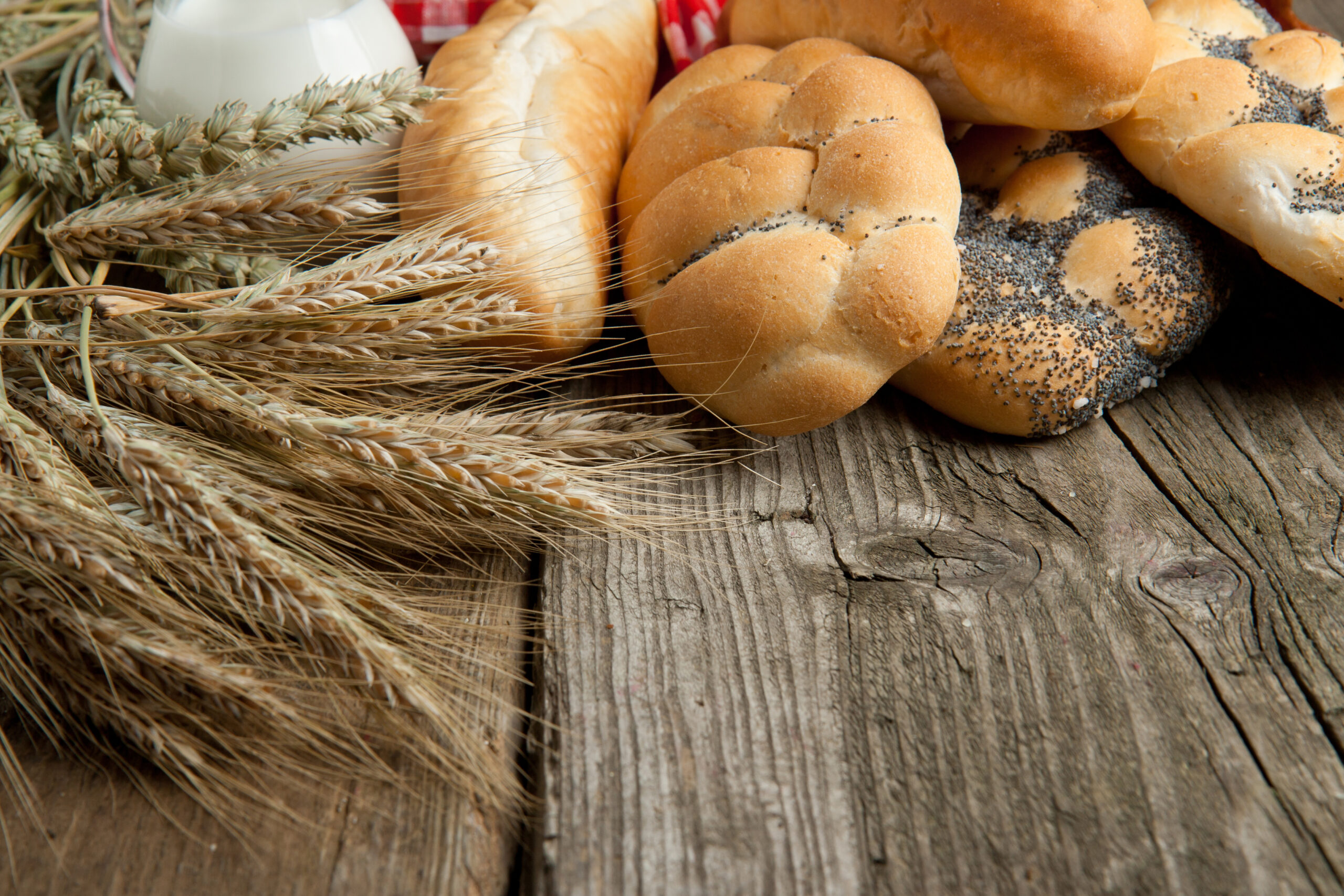The Ultimate Complex Carbs List for Healthy Eating
The Ultimate Complex Carbs List for Healthy Eating
Thanks to fad diets like Keto and Atkins, carbs have gotten a bad rap over the years.
However, carbohydrates are an essential macronutrient of any diet, as the average nutritionist recommends at least half of your diet should include carbohydrates.
Not only do carbs produce glucose required for energy and exercise, but they also aid digestion, manage cholesterol, and influence how full you feel after every meal.
Nevertheless, there are healthy and unhealthy carbs, which you need to be aware of if you are on a diet program or trying to lose weight.
This article will explore the benefits of complex carbohydrates (i.e., good carbs) and provide a complete list of good carbs and ways to incorporate them into your diet.
What Are Complex Carbohydrates? Understanding Carbs
Carbohydrates are composed of sugar molecules found naturally in food and broken down into glucose in our cells to power our bodies.
There are two types of carbohydrates we tend to differentiate, simple and complex carbs.
Simple carbohydrates consist of a single or dual sugar molecule that requires minimal effort by the body to process. Essentially, they start breaking down the moment you put them in your mouth.
The most common simple carbohydrates include table sugar, fructose, and other highly processed ingredients.
The problem with processed foods is that they often strip the fiber and starch off the products during processing, leaving consumers with fewer nutrients.
Additionally, consuming simple carbohydrates, which are often designed to taste good, can lead to overeating. They can also spike insulin levels because they are absorbed into the bloodstream quickly and give you those classic “sugar highs” and crashes.
Complex carbohydrates are composed of several sugar molecules–also known as polysaccharide molecules–which require significantly more effort by the body to break down and the intestines to absorb.
Vegetables, fruits, and nuts are all forms of complex carbohydrates that contain lots of nutrients and are good for the gut.
The primary difference between simple and complex carbs is that simple carbs contain very few nutrients (e.g., vitamins and minerals), and complex carbs contain lots of nutrients. And, since complex carbs are more difficult to break down, they also help us feel fuller longer.
There are two types of complex carbohydrates:
- Fiber: A polysaccharide molecule that cannot be digested in the stomach but is broken down in the gut.
- Starch: A polysaccharide molecule that normal enzymes can digest.
We will talk more in-depth about starchy and fibrous carbs, but both provide immense nutritional benefits and are a healthy addition to any diet.
The Benefits of Complex Carbohydrates
Complex carbohydrates offer tremendous nutritional value and are great for curbing cravings.
Some widespread benefits of complex carbs for weight loss and health include:
- Higher nutritional value than simple carbs
- Greater feeling of fullness after meals
- Regulating bowel movements
- Managing cholesterol
- Improving gut microbiota
- Reducing glucose and blood sugar spikes
- Sustainable energy
- Adding complex carbs to any diet will ensure you get proper nutrients and maintain a healthy gut biome.
Additionally, complex carbs can be a good source of satiety if you’re trying to lose weight without piling on the calories.
Best of all, many foods rich in complex carbohydrates are tasty and versatile, making them your ultimate pal in the kitchen
The Importance of Fiber
Before we get into the list of complex carbs, I want to focus a little more on the benefits of fiber.
Incorporating fiber into a diet for weight loss or any reason is especially important because it helps us feel fuller for longer and provides significant nutritional value.
There are generally two forms of fiber, which we differentiate:
- Insoluble Fiber: Fiber that doesn’t dissolve in water and helps regulate bowel movements (ex., Kale, seeds, almonds.)
- Soluble Fiber: Fiber that does dissolve in water and helps regulate cholesterol and insulin levels (ex., Apples, beans, berries).
Both forms of fiber are fundamental and can address different needs in your diet. However, soluble fiber may be more important for addressing specific health concerns, while insoluble fiber can be a healthy snack alternative to curb cravings for longer.
I’d also like to mention resistant starches, which contain soluble and insoluble fiber properties.
Resistant starches are not digested by the small intestine and ferment in the large intestine, feeding the good bacteria in your gut. In addition, most resistant starches provide synbiotics and prebiotics, which, if you take probiotics, can help improve your gut microbiota.
With that said, I wanted to provide a complex carbohydrate list of the best sources for these macronutrients to help you find ways to incorporate more good carbs into your diet.
List of Complex Carbs and Popular Sources
Starches
Starches are a very important complex carbohydrate, which can be a good source of iron, fiber, B vitamins, and other minerals.
Starches also help us achieve satiety and provide sustainable energy throughout the day.
In cooking, starch can be used as a healthy thickening ingredient, most often associated with cornstarch.
Wheat-based products, potatoes, oats, and cereals are great sources of starches that can serve as a hearty breakfast or an endearing side for any meal.
Since nearly all complex carbohydrates contain fiber of some kind, I wanted to outline a list of foods that contain starches, which you should experiment with in your diet.
- Oats
- Durum wheat
- Buckwheat
- Einkorn
- Cereals
- Sweet potatoes
- Bread
- Bulgur
- Emmer
- Kamut
- Pasta
- Rice
- Spelt
- Rye
Recipe Ideas and Additions
- Opt for whole grain cereals and oatmeal instead of sugary cereals for breakfast.
- Make sweet potato fries as a side to any meal.
- Use brown rice as a side or base for grain bowls or other healthy meal options.
- Experiment with homemade pasta to consume less processed ingredients.
Whole Grains
You’re probably inundated with products that list whole grains on a daily basis, but what are whole grains?
Whole grains are derived from cereals, grass-like plants, such as wheat and oats, and some non-grass plants, such as quinoa.
A whole grain is anything that contains all of the grain plants and is not refined or stripped of any of its three parts (bran, germ, and endosperm).
Whole grains can help reduce your risk of heart disease, high blood pressure, and diabetes. Some of the most popular sources of whole grains include:
- Millet
- Bulgur
- Farro
- Oats
- Rice
- Quinoa
- Barley
- Kamut
- Sorghum
Recipe Ideas and Additions
- Opt for whole wheat or whole grain bread for sandwiches.
- Replace traditional pasta with whole wheat pasta that’s much more fibrous.
- Substitute white rice for brown rice.
- Add brown rice, quinoa, farro, or millet as a side or the main dish for your next meal.
- Look for whole grain cereals at the store (Be sure to read the label for added ingredients!)
- Substitute all-purpose flour with buckwheat or millet (account for added leavening times).
Vegetables
Next up are vegetables, which should be a staple of any diet.
In terms of consuming healthier vegetables, I highly recommend growing your own–gardening is a great hobby to get into. Additionally, I recommend sourcing locally grown vegetables at farmer’s markets that are more nutritious.
Vitamins, like Vitamin C, are photosensitive and will deteriorate with age and light exposure. As with many nutrients, the fresher you harvest your fruit or vegetable, the more nutrients it will pack.
In terms of eating raw and cooked vegetables, I recommend incorporating both. Raw vegetables contain higher fiber content, although they may be harder to digest for people with gut issues. Furthermore, cooked vegetables may allow for more bioavailable nutrients, which are easier to digest and absorb.
Fortunately, almost every vegetable on this list can be served hot or cold, as a side, or herb.
- Spinach
- Lettuce
- Carrots
- Peas
- Mushrooms
- Squash/zucchini
- Alliums (onion, garlic, leeks)
- Asparagus
- Swiss chard
- Fennel
- Cauliflower
- Broccoli
- Peas
- Peppers
- Parsnip
- Beats
Recipe Ideas and Additions
- Roast vegetables with oil and sea salt for a healthy snack.
- Use natural herbs from a garden or store instead of dried herbs.
- Add steamed vegetables as a side with any dish.
- Make a salad with any leftover vegetables in your garden or refrigerator.
- Make soups and chili using vegetables.
- Experiment with veggie-based noodles in place of pasta.
- Add vegetables, like spinach, peppers, or asparagus, to omelets and quiche.
- Shave vegetables like asparagus for easy digestion and use the shavings as a salad garnish.
- Top sandwiches and wraps with cooked vegetables like broccoli rabe.
- Combine vegetables like carrots and celery with sauces for a snack.
- Juice vegetables like carrots, ginger, or celery for a healthy tonic.
- Create a casserole using several different vegetables.
Fruits
It hardly seems necessary to talk about the benefits of fruits, but fruits contain several vitamins and minerals, including vitamins A and C.
Furthermore, fruit is highly fibrous and can serve as a good snack to help curb cravings if you feel hungry.
Some fruits you can find at any American supermarket and incorporate into your diet include:
- Berries (raspberry, blueberry, blackberry, etc.)
- Bananas
- Apples
- Lemons
- Limes
- Pears
- Dragonfruit
- Pineapple
- Coconut
- Melons (watermelon, cantaloupe)
- Citrus (clementine, oranges)
- Avocado
- Currants
- Dates
- Jackfruit
- Grapes
- Guava
- Kiwi
- Kumquat
- Jujube
- Nectarine
Recipe Ideas and Additions
- Substitute salty snacks like pretzels with an apple or a handful of berries.
- Combine berries with honey and lime juice for a sweet snack.
- Add almond butter to apples for a fun kid’s snack.
- Incorporate dried fruits like raisins and banana chips for greater fiber.
- Add fresh fruits to salads and make your own raspberry or blueberry walnut dressing.
- Create smoothies with fresh fruits, milk, or alternative milk.
- Add fruits to yogurts for a parfait.
- Create a fruit salad for a dinner appetizer.
Beans and Legumes
Beans and legumes are all-natural foods that are low in fat and contain several important nutrients, such as folate, iron, B vitamins, and zinc.
In particular, beans are a great source of fiber and protein–especially if you are on a vegetarian diet.
With that said, you can buy several different bean varieties and legumes at affordable prices in the supermarket.
- Black beans
- Fava beans
- White beans
- Kidney beans
- Green split peas
- Chickpeas
- Lentils
- Lupins
- Vetches
Recipe Ideas and Additions
- Create vegetarian soups and chilis using beans and legumes.
- Mash up dried beans, like garbanzo beans, into a falafel.
- Add cooked beans to sandwiches, wraps, and salads.
- Puree beans for a delicious dip.
- Form a bean patty for a vegetarian meal.
Nuts and Seeds
Finally, nuts and seeds are considered the ultimate protein replacement for any vegetarian diet and pack a healthy punch of fiber, magnesium, vitamin E, and healthy fats.
Depending on the nut or seed, you may even find different benefits. For example, some nuts, like walnuts, are a great source of omega-three fatty acids, commonly found in fish. Other seeds, like pumpkin seeds, contain high levels of zinc and are considered a fertility food.
Check out the list of nuts and seeds below and experiment with adding them to different meals.
- Chia seeds
- Peanuts
- Pumpkin seeds
- Almonds
- Hazelnuts
- Walnuts
- Pistachios
- Pecans
- Brazil nuts
- Macadamia nuts
- Pine nuts
Recipe Ideas and Additions
- Add chia seeds to smoothies for more fiber.
- Garnish finished meals with nuts, like fresh pine nuts.
- Add nuts like pecans and hazelnuts to salads and dressings.
- Add nuts and seeds to wraps and sandwiches.
- Bake bread with plenty of seeds for added fiber.
- Roast pumpkin seeds for a healthy snack.
- Snack on nuts, like pumpkin seeds, walnuts, cashews, etc., as a healthy solo snack.
Not All Carbs Are Bad
It’s clear that carbohydrates have become the unfortunate scapegoat and boogeyman of a society addicted to processed foods and fast sugars. While simple sugars can be dangerous in excess, complex carbohydrates provide many essential vitamins and minerals that no diet should ignore.
From complex B vitamins to magnesium and zinc, complex carbohydrates can be an excellent source of nutrition and incredibly healthy for your heart, kidneys, gut, and blood sugar.
Experiment with ways to incorporate more complex carbohydrates into your diet, whether it’s just topping your food off with healthy nuts or opting for a tasty melon instead of a cookie.
Over time, you’ll find that the benefits of these complex carbs and how you feel when you put them into your body will dwarf any cravings for sugary snacks and simple carbs that you’ll one day be able to refuse proudly.
Healthly Tips and Tricks Delivered to your Inbox
Enter your email below and I’ll send you delicious recipies, articles, and tips to get control of your health and simple steps to maintain it.


